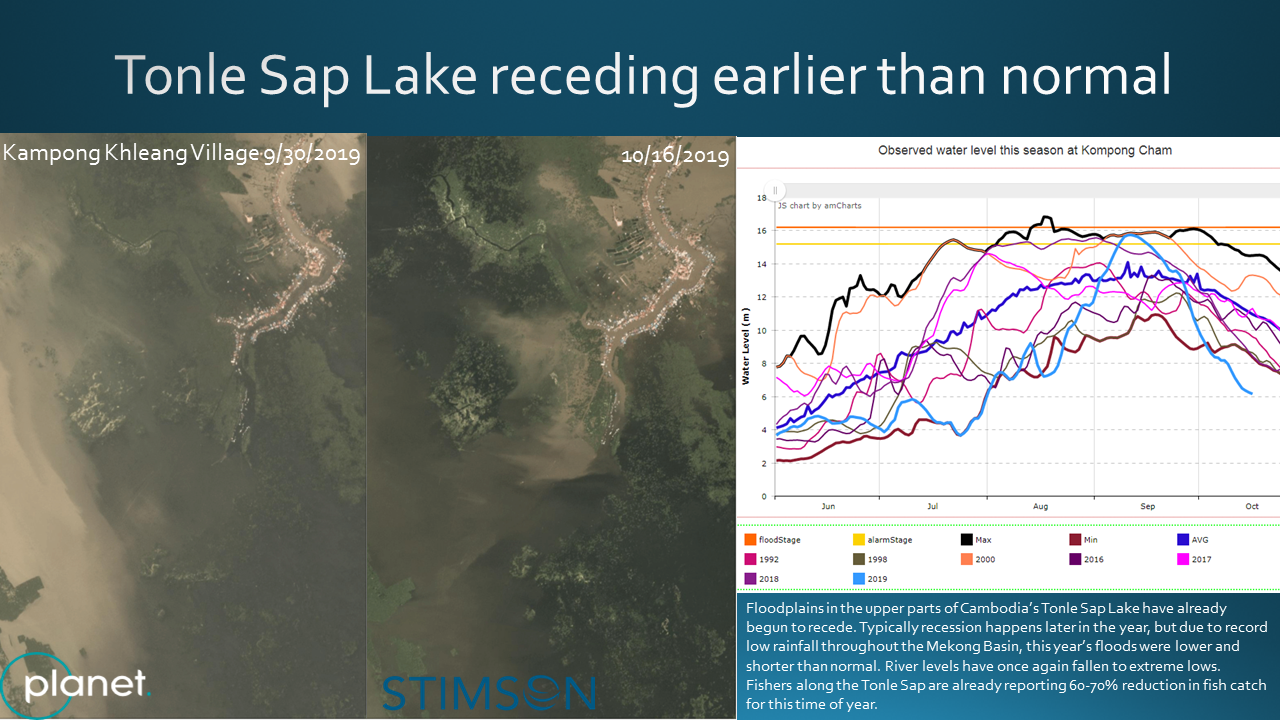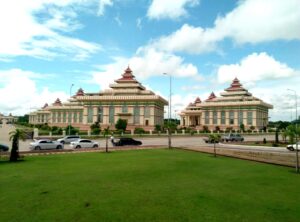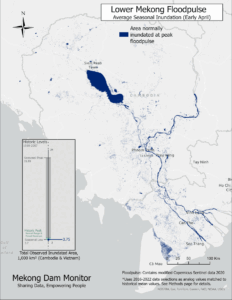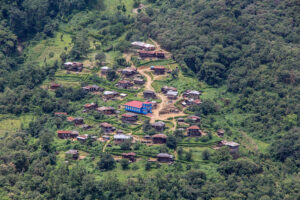The contraction of Cambodia’s Tonle Sap Lake has begun earlier than normal this year – and its expansion earlier this year came very late. In order for the Tonle Sap to produce 500,000 tons of freshwater fish catch from which Cambodian’s deriver up to 70% of their protein, the flood season needs to sustain over about a six-month period, but this year’s flood season could last for half of that time. The floods send fish into the lake’s surrounding floodplain where many species of fish thrive in a nutrient-rich habitat. The floods come in from the Mekong mainstream when the river draining out of the Tonle Sap Lake and into the Mekong mainstream reverses direction causing a massive backup of water into the lake. This year the reversal of the Tonle Sap happened in late August and the river will likely soon return to its original course and drain the lake even more quickly than now.
When looking at the satellite images compare the plumes of muddy sediment in the water. The 9/30 image shows plume direction moving inland whereas the 10/16 image shows plume direction tailing outward and back into the lake.
Our team has heard anecdotally that fish catches are already down this year 60-70% compared to this time last year and many species typically caught during the fall just aren’t showing up in nets.
Record low precipitation levels this year due to an El Nino weather pattern have drastically shortened the period of Tonle Sap expansion – and upstream dams also contribute to less water in the system to drive the lake’s expansion.
The mainstream river level has now once again fallen to an extreme low and will not likely rise again unless some late season storms occur. This means the traditional fish harvest season for the Tonle Sap which typically occurs in December/January will be likely lower than usual. And the drought will likely persist to dangerous levels into the winter and through the late spring. It’s possible that the Mekong Delta in Vietnam and the Tonle Sap/Mekong floodplain in Cambodia will experience the worst drought in memory.




